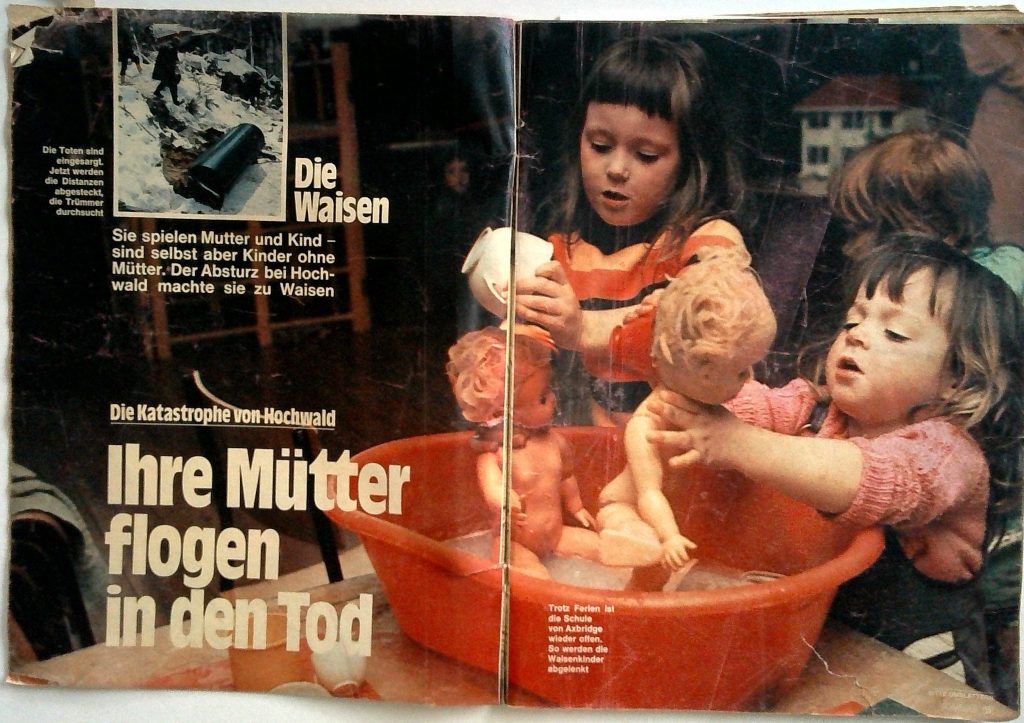
This report was in a Swiss magazine has been first scanned and then translated from German so there are errors. But reading this account, including the mistakes, you get a different perspective to the British press stories..
The blind landing approach ended with death, tears and mourning. The unlucky plane “Invicta” Vanguard G-AXOP, which crashed on Tuesday last week at 10.15 o’clock near the hamlet of Herrenmatt, had lost its way in the snow. Over the weekend, after the flight recorder evaluation in England, the theory that flight captain Ivor Terry (47) had confused two radio beacons of the Basel-Mulhouse airport and therefore made the landing approach to the city of Basel became more solid.
This assumption is confirmed, firstly, by the fact that Basel police officials saw a plane fly past “only a few meters above the roofs” on the morning of the accident and reported this to Basel’s cantonal police commander Robert Heuss. And secondly, pilots with numerous Basel landings confirmed to the “Schweizer Illustrierten”: “That the British pilot confused the two radio fires during the heavy snowfall is within the realm of possibility.” Thirdly, this “confusion” is possible because the distance from the first beacon to the beginning of the runway is the same as the distance from the second beacon after the end of the runway to the area above the city of Basel, namely 8.5 km.
The pilot was apparently very close to “touching down” in Basel-Stadt. Kapo commander Robert Heuss is probably right when he says: “Basel narrowly missed a catastrophe.” Even before that, but still late and vague, the Basel tower had alerted the captain Terry and his co-pilot to the wrong course (tower: “I think you are south of the airfield”).

But now he must have noticed the error himself: He climbed up again from Basel, but too slowly. The airplane broke up at an altitude of 620 meters, and, judging from the position of the debris, with its landing gear extended.
What was the reaction of the people at the Basel radar station, which does not show the altitude of the aircraft and has only a limited radius of action? Could a modern radar system have been used to warn the pilot and prevent the accident?
The accident may have started because the pilot, after two aborted landings, thought he was flying over the approach beacon “Bravo November” (BN) near the French town of Sierentz (about 8 km from the Basel runway). However, according to the suspicion, he passed the beacon “Bravo Sierra” (BS) at the end of the Basel runway and proceeded to a supposed blind landing approach to the city of Basel, where his aircraft was then secured by police officials. Basel narrowly escaped a catastrophe And somewhere here, the flight captain may have given another false position report. He reported “Middle Marker.” The “Middle Marker” is a system installed directly in front of the runway, which the pilot in the aircraft registers acutely and optically and reports to the radio tower during overflight.
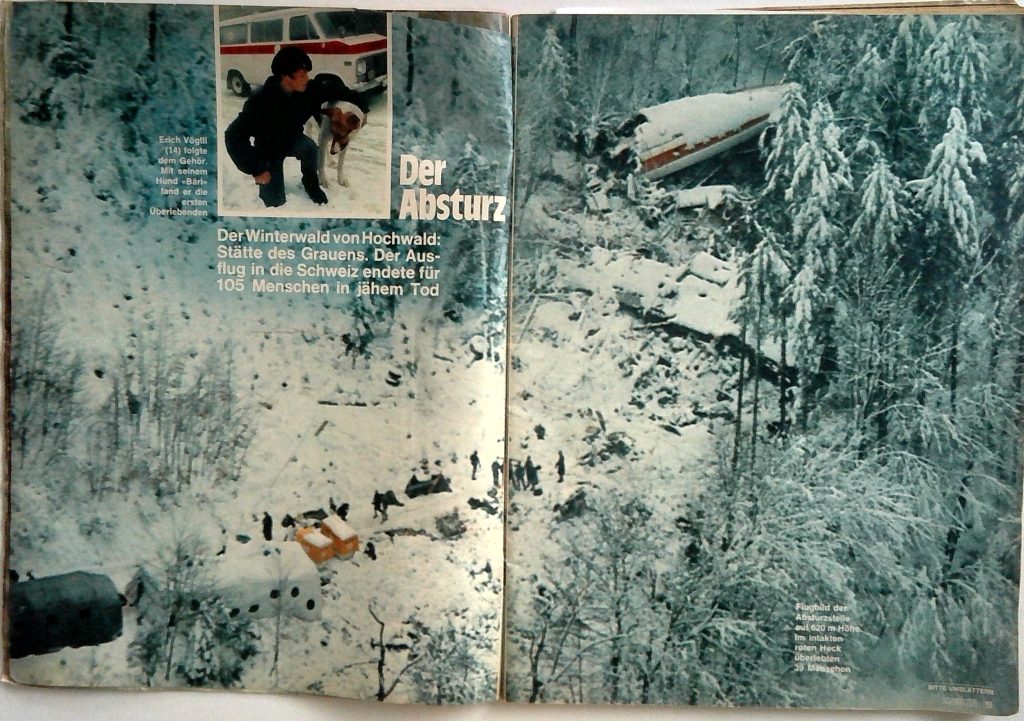
The Basel people rejected the loan application for this on September 26, 1971. Are Basel’s French air traffic controllers to blame? Did they give incorrect instructions? One pilot: “Of course, Basel doesn’t have the same class of people working there as Orly, Heathrow or Zurich.” The airport administration in Mülhausen has also come under fire in recent days. They are said to have initiated the rescue operation with a delay of one and a half to two hours. Airport director Dr. Theodor Stauffer said: “Immediately after the fear of a crash, i.e. between 10:20 and 10:25 a.m., Basel Airport carried out the necessary measures. Alerts
Why was the airport not closed, as is customary internationally, to allow the missing and possibly lost aircraft to find their way back to the airfield safely? Open questions. There were no answers to be found. Over the weekend, the Basel airport administration went on an “information blackout”. Just like the Swiss air accident investigators under spokesman Kurt Lier. For why, I wonder?
The flag hangs at half-mast on the gray, massive church steeple. On the door, a handwritten note: “Open for prayer.” The barred gate to the town hall is locked. The main street is deserted and empty. In some houses, the curtains are drawn. A few citizens hurriedly scurry past. They fear they might be approached.
Axbridge in Somerset (West England), three days after the event that no one understands. A village numbed by pain, 920 people with endless questions and too few answers. On Tuesday morning at 6:30 a.m., 36 women and men left this village, 19 of them forever.
George Bradley, grocer at the Marketplace in Axbridge, was the last to bid them farewell. “I knew them all,” he said, “they were all my customers.” It was a beautiful, sunny morning as they boarded the bus for the airport, and George Bradley called after them, “You’re lucky, give my regards to sunny Switzerland.” The plane crashed after all! Now he stands in the storeroom of his grocery store in front of a dozen cardboard boxes. On them are the names of those who never came back: Sandford, Hopkins, Avery, Hale. They all had credit with George Bradley and had asked him to return a number of Easter gifts for them to pick up on the Saturday before the holidays. Huge chocolate eggs, marzipan, Easter bunnies wrapped in silver paper. He recalls, “On Tuesday afternoon at three o’clock, I had another customer in the store and I said to him: ‘Isn’t this fantastic weather for a trip to Switzerland?’ and the man looked at me in horror and said: ‘But the plane crashed!’ That was the first news I heard of the disaster.” His wife Lillian is still visibly in shock. She finds it difficult to speak. “We were all friends, were all members of the Ladies Guild of Axbridge’. Now our association has only five members.”
The president of that association was Vera Binning. She organized this trip for the women of Axbridge, but she herself stayed home. “I have four children,” she said, “the youngest is only a few months old. I couldn’t leave them alone.” Vera Binning was one of the bravest women in Axbridge in the last three days. In the first 24 hours after the disaster, she was the one rushing around the village, going from house to house, offering comfort, notifying the parish priest, making telephone connections to Switzerland. The school is located just 50 meters from the marketplace in Axbridge. The sound of children’s laughter and singing comes from a large room. Two boys hammer nails into pieces of wood in rhythm. They are making swords. Some are painting. In one corner, an eight-year-old girl sits alone and hammers a children’s song on the xylophone.
In the middle of the room stands school principal Michael Dexter. School has been out for a week in Axbridge. But when Michael Dexter heard about the disaster, he immediately opened the school. “We had to keep these kids busy, distracted, get them out of the mourning houses. Some of them didn’t know for two days whether or not their mothers had survived, and others still don’t realize to this day what happened. Their fathers are on their way to Hochwald.
Two fathers collapsed when they heard the news and were unable to care for the children. Ten children lost their mothers, and the mothers of another eight children are seriously injured.” These wounds will be slow to heal Dexter draws parallels to the Aberfan cata- strophe, where a coal dump buried an entire school, “As in Aberfan the consequences of this catastrophe will be felt for decades to come. The difference: back then, children died; today, those who are supposed to feed, care for and educate these children here have died.” He is silent, then a shake of his head, “I don’t know which is worse.” Dexter loses himself in a soliloquy. “So far, we’ve gotten through everything okay. Everyone’s so busy, none of the kids have really grasped what’s happened. In 14 days, when school starts, they may just get their first shock. When there is no one to make them breakfast in the morning, no one to come home to. And when the big family vacations come in the summer. Oh God, I dread the vacations.”
Fifteen kilometers north of Axbridge is Congresbury, a market town. On a crossroads stands a memorial, a gray, rectangular column. Otherwise, neat but drab settlement houses. They lost nine of their relatives. In one of these houses, 35 Stonewell Lane, lives Philip Batt. He and his 17- and 19-year-old sisters Susan and Gillian are without a doubt the hardest hit victims of this catastrophe. They lost a total of nine relatives: their parents, their grandmother Getrude Grove, their aunt Jane Newell and her children Mark and Rebecca, their aunt Elizabeth Batt and her daughter, and an uncle. The house is deserted. “Please contact 118 Claverham Road” is written on the door.
A friend lives in Claverham Road. He has taken the three siblings to live with him. “Their mother Beryl Batt, was known to everyone in the village,” he says. “She was president of the bowling club and organized this trip to Switzerland for Congresbury. Forty Congresbury citizens attended and only one survived.” Four houses down Stonewell Lane, a hearse pulls up. A young man in black gets out. He walks into an empty abandoned house. “This is where my uncle and his wife lived,” he says. Both died in Hochwald. There’s a sign on the door: C. Price, mortician. Congresbury now has no one to bury its dead.
One of the strangest houses in Congresbury is “Fern Farm,” 50 m from the memorial. In its front yard are hundreds of garden dwarfs. The owner of this house earns his living with their production. Behind closed doors in this house, Marion Warren has been hiding for several days, fleeing from the dream that torments her and the accusations with which she torments herself. “My friends must think I’m a witch,” she says. Because for Marion Warren, this catastrophe took place three weeks ago. “I saw it all in a dream. I saw the plane losing altitude, I saw trees and I saw snow and finally the catastrophe. The next day, my decision was made to cancel the trip. I went to Beryl Batt and gave her back my plane ticket. I don’t know who got the ticket, but I know that he lost his life with it.”
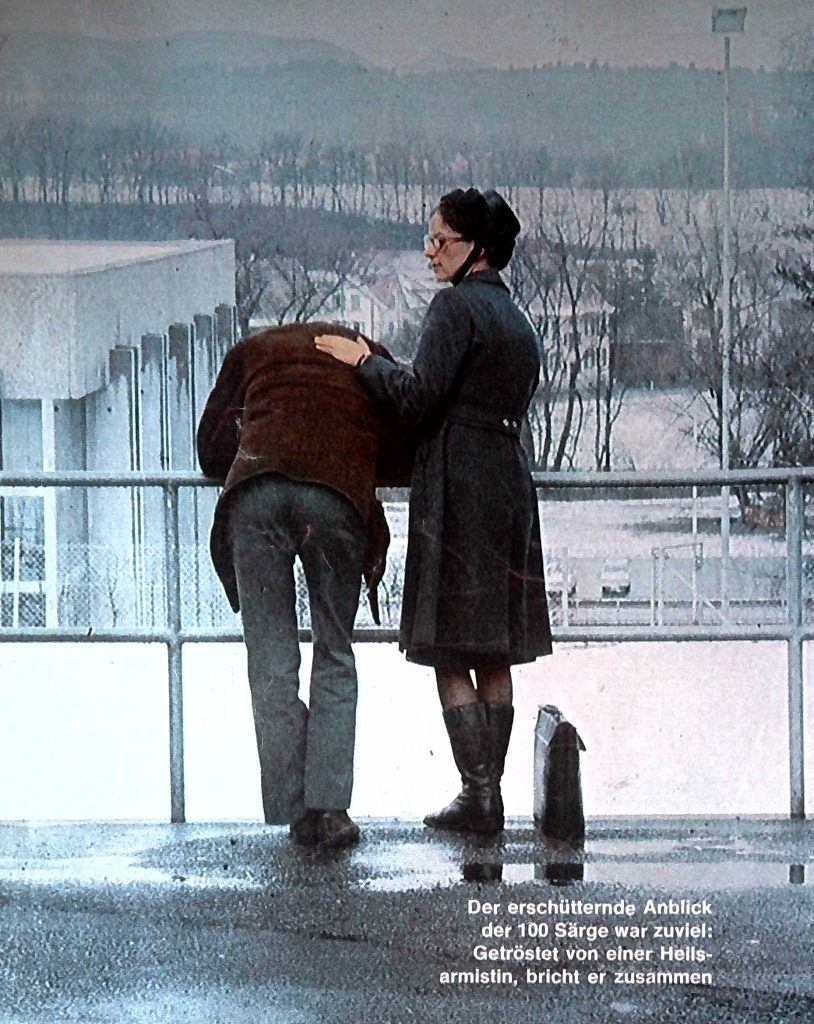
The shocking sight of the 100 coffins was too much: comforted by a salvationist, he collapses the scenery seemed haunting.
Shortly after noon, the leaden sky seemed dark. On the narrow village street of Hochwald, tractors, military camions, police vehicles, material vehicles, ambulances, private cars were crowded. And above all, an unreal silence. The snow, which had become a shroud for a hundred people up on the hill, fell incessantly.
The chaos in this remote area must have been terrible before Luft-schutzbataillon 4 was called out at lunchtime and began rigorously closing off the few access routes. Not even the weather had kept the curious away. This was in stark contrast to the people of the surrounding villages, who had selflessly taken charge of the first rescue measures for the passengers of the crashed English plane.
They don’t want to know anything about money “Hopefully we won’t be compensated with money,” says Helene Metzger, who was one of the first rescuers. Hedi Vögtli from Herrenmatt, whose son Erich was the first to find the plane and whose husband, the fire chief, sounded the first alarm, did pure Samaritan work. She set up an emergency hospital in her farmhouse, tore out towels, bed linen and white goods. And just as silently, the neighbors came in the evening and took the towels into their own washing machines.
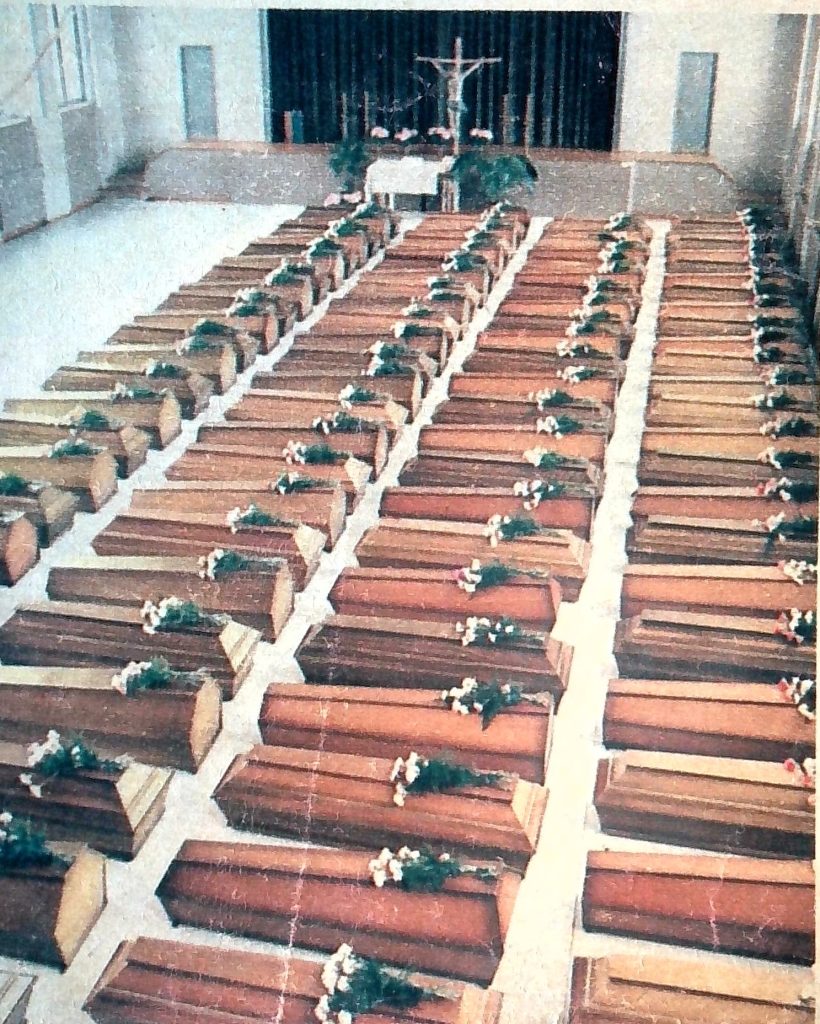
The people of Hochwald (“Hodler”), who had spent hours dragging dead and wounded downhill on their backs with rescue teams (about 600 on that black day), find a spokesman in Samuel Nussbaumer: “It’s a pity that some of those I dug out didn’t live long afterwards…” The horror was written on the pale faces of the mostly young soldiers. Federal Councillor Furgler, who had rushed to the scene of the accident as quickly as possible – as had the British Consul in Basel, Ivan May, from the official opening day of Muba – was also deeply moved.
The surviving women called 23-year-old Susan Dyer their hero. The nurse from Axbridge, who plans to marry in three months, helped the two surviving hostess free their friends from their trapped seats, and encouraged them to sing intermittently From church songs to “When the Saints go Marchin’in.” “We tried to make fire,” recalls 19-year-old hostess Daphne Axten. “But not even whiskey would light the wet pine wood. So we led the survivors a bit away from the debris explosion because we feared one.
And suddenly a little boy with a dog emerged from the fog It was Erich. Daphne’s school friend and colleague Jill Manning was killed in the crash. The second fatally injured hostess. Joy Saddler, had only been flying for a month. But Daphne and her colleague Elizabeth Low assure, “We’ll keep flying.”
Most of the survivors still in Basel hospitals want to go home by train. Mrs. Warden, whose slightly injured boy was transferred from the Basel Cantonal Hospital to Liestal, WHERE his mother is in intensive care, cannot yet make any plans, however.
But here, any help came too late The end for those who had not been lucky in the accident was a trip on the military camion: Four days after the disaster, ten trucks of the Swiss Army transported the brown coffins with the bodies of the crash victims to the airport Basel-Mulhouse, WHERE they were prepared for the return flight to Great Britain. Earlier, more than a hundred people from the counties of Bristol and Somerset in the West had to perform the saddest task of their lives – they had traveled to Switzerland to identify the dead recovered from the plane wreckage as their relatives. Shocking scenes had taken place in the transit hall of the Basel airport. Men wept with joy as they recognized their surviving wives. Men remained silent when they had the certainty, that their loved ones would never return.
A sad memento in brown paper bags.
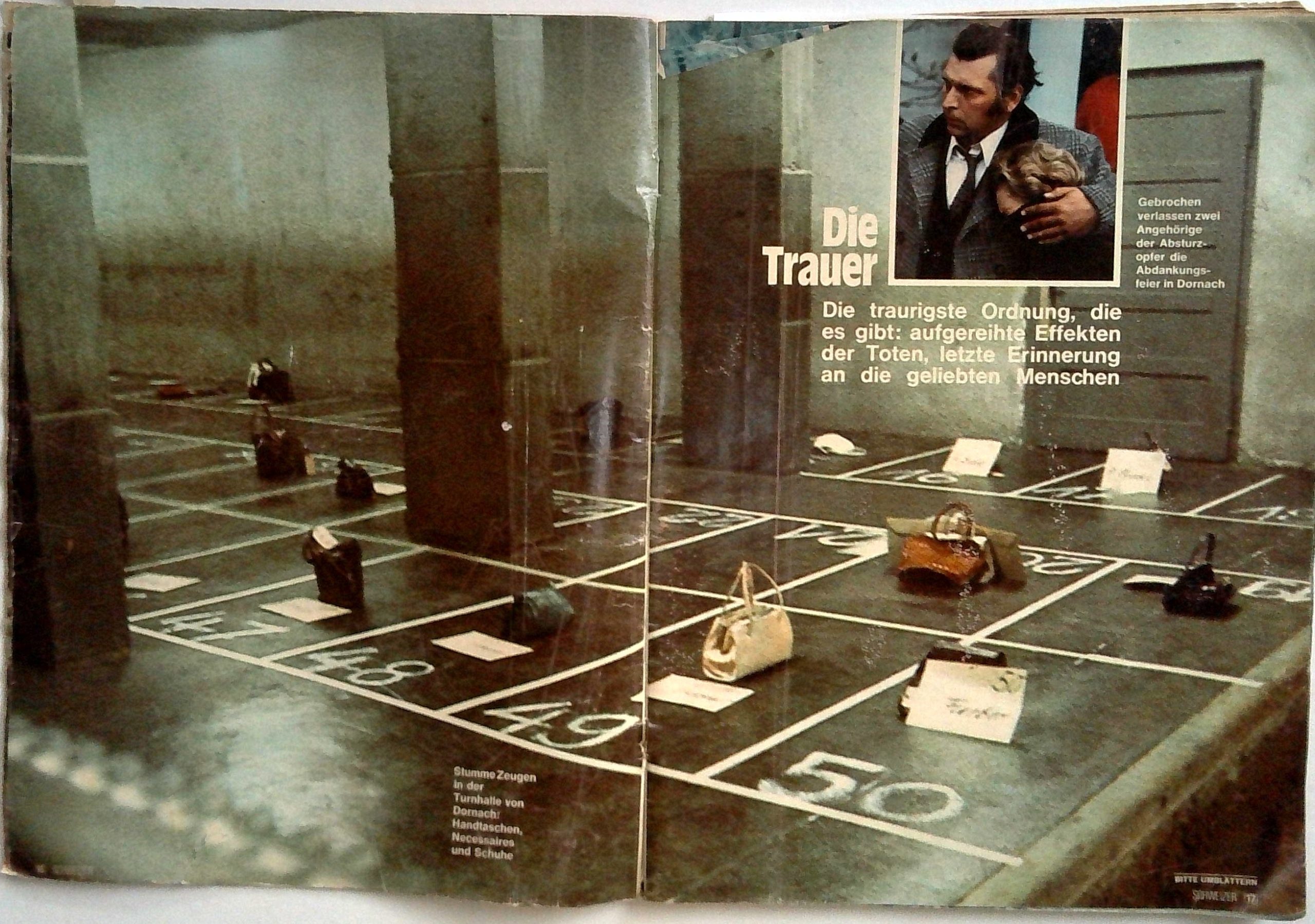
But the big shock came the next day. Swiss Salvation Army Sisters accompanied the bereaved, mostly simple people from the Bristol area, to the basement of the Oberdornach gymnasium. Stunned, they stood before the white squares drawn on the floor: in each of the numbered squares lay effects of the victims of Hochwald- open handbags, individual shoes, pieces of clothing. When they returned from the basement of the gymnasium, they carried brown paper bags labelled with numbers of numbered dead from 1 to 104.
They had come to take home what had survived the disaster of Hochwald: familiar objects that had belonged to their mothers, to their wives, to their husbands, to their children. Later, they stood in front of the entrance to the gymnasium and stared into this room of horror. Where students usually play with bellows and do gymnastics on apparatus, there was only one thing: coffins. One man from Redfield, near Bristol, kept returning to three of the carnation-decorated coffins and kneeling in weeping before them. He could not believe that his wife of 35 years, his 12-year-old son and his 11-year-old daughter were irretrievably dead.
The fact that an abdication ceremony with pious words took place in Dornach’s St. Mauritius Church brought little comfort. And the address that Solothurn’s Landammann Rudolf Bachmann prefaced his condolence address showed more sense for hollow protocol than for human compassion. He first greeted the “highly respected Federal Councilor” and “Your Excellency Ambassador Wraight” as well as the “Councillors of the Government” and only at the end the “bereaved families”.
A Dornach citizen who had been present during the rescue work: to “Impious.” Survivor Barry T. Jones from Bristol, principal of a school in Clifton for ten years, is one of the 39 survivors of the Hochwald disaster. He was the first to return to England
“Mr. Jones, you survived the plane crash virtually uninjured. Will you be getting back on a plane in the future?” “Yes, of course. I got on another plane on the evening of the accident.
“The fact that you were in the rear of the plane saved your life. Did you deliberately take a seat in the rearmost part of the plane?” “No, not at all. It was purely by chance. All the seats were numbered. Because I was one of the last to sign up for the flight, I was given a seat in the second rearmost row on the right. Seat number 24 saved my life.”
“How did the flight go until the crash?” “The flight up to Basel was pleasant. People only got nervous when we were still circling over the city for twenty minutes. The plane was badly shaken by the snowstorm. Several women vomited. Then suddenly trees appeared outside my window. There was a terrible crash – and the plane broke up with a roar.”
“What happened then?” “I was hanging upside down in my seat belt. I didn’t have time to be scared at all in those seconds. I heard loud wailing and moaning and the crackling sound of the burning wing. I crawled along the ceiling and reached an opening through which I, together with some other passengers, found my way out. Then we set out to look for help. We trudged downhill through the deep snow. Finally, we reached Hochwald. We entered the first house. After a few communication difficulties, we were able to make it clear to the woman what she had to do as it happened. She was very kind and helpful, bandaging our wounds and giving us hot tea and sandwiches.”

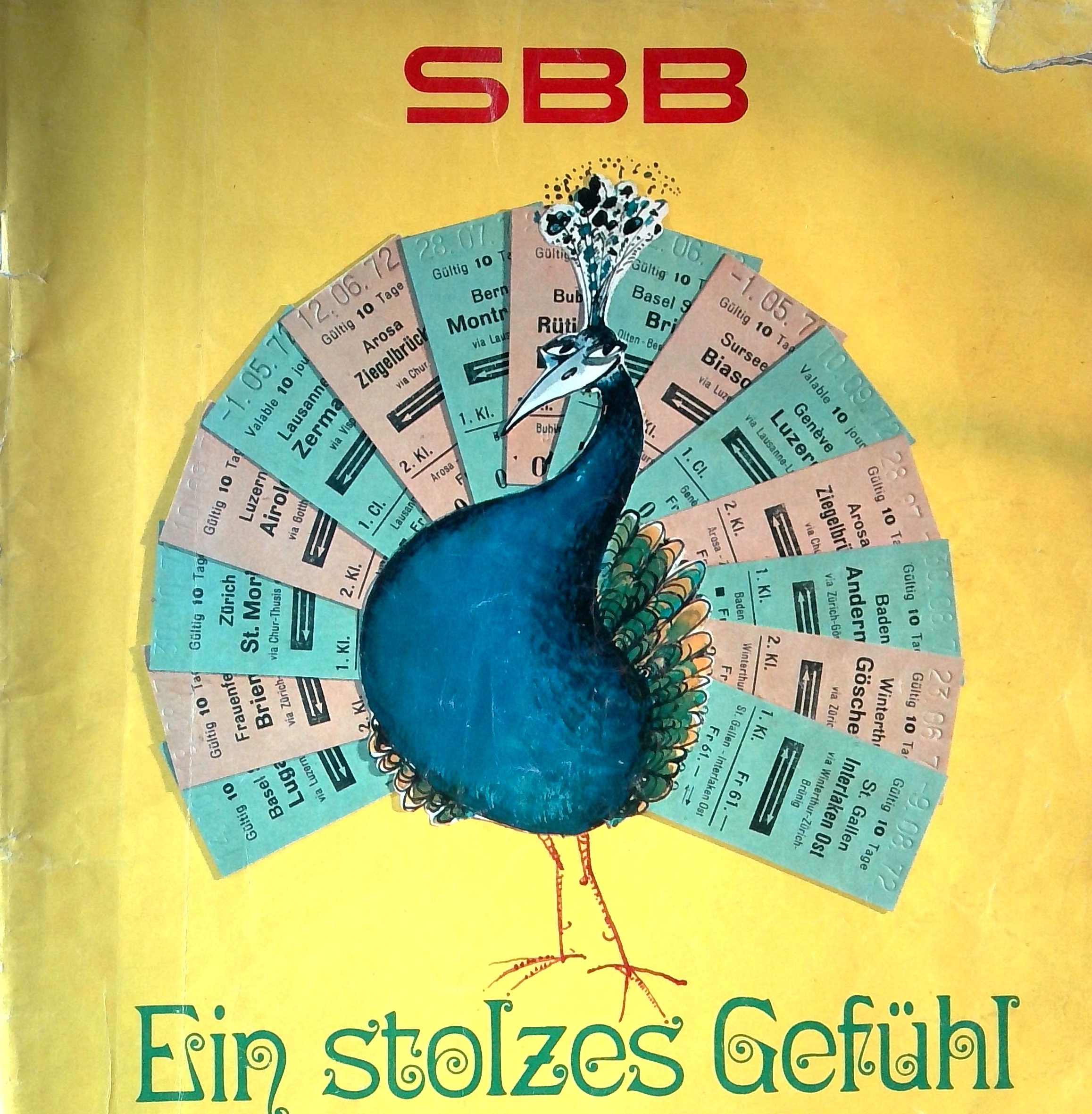
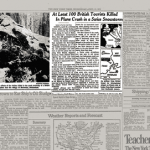
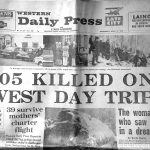


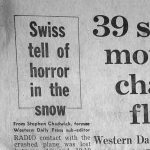
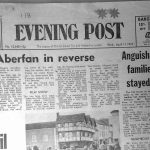
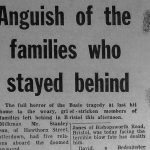
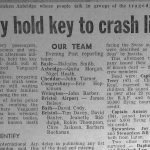
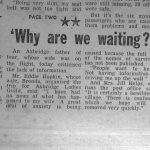
Leave a Reply